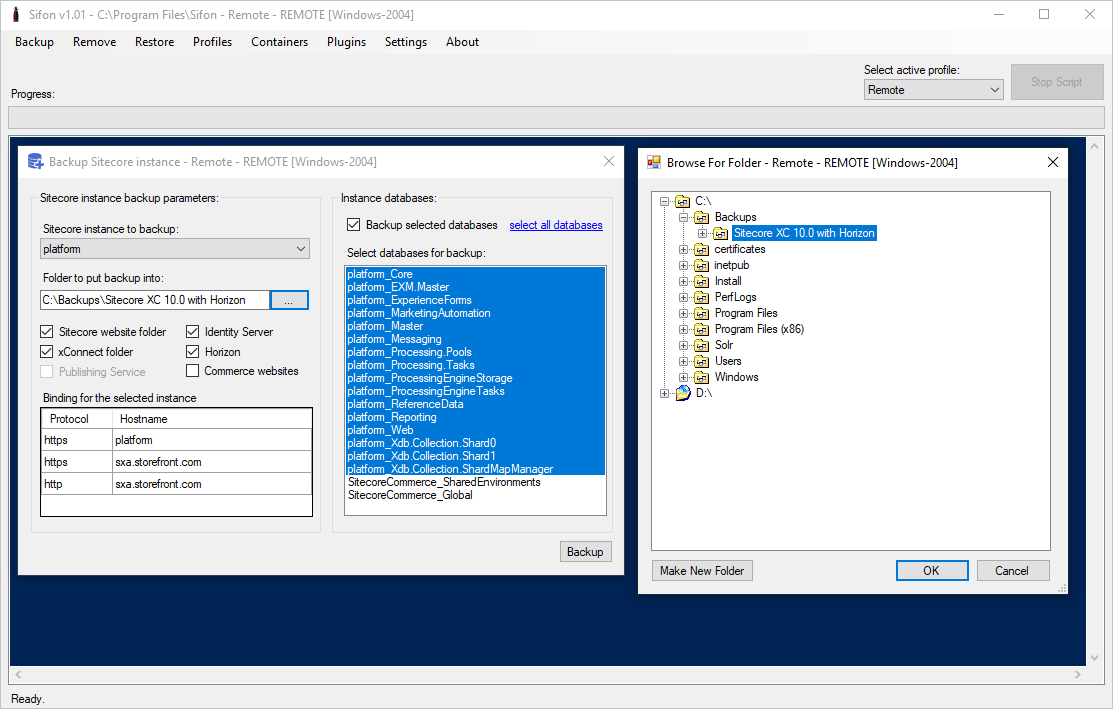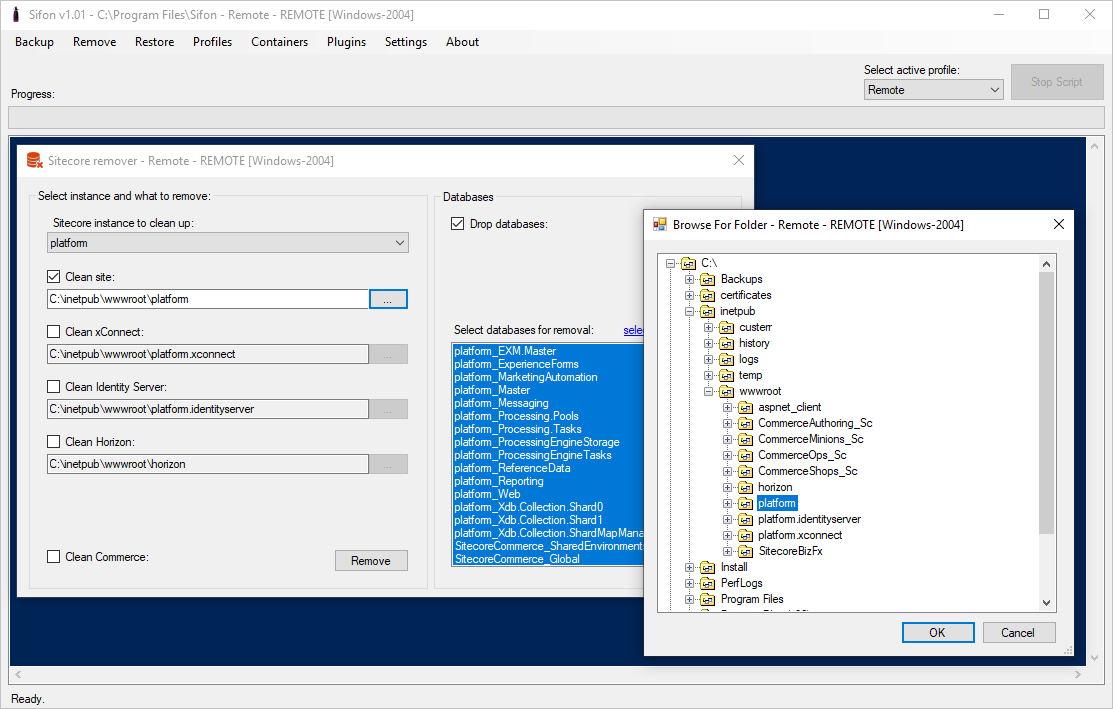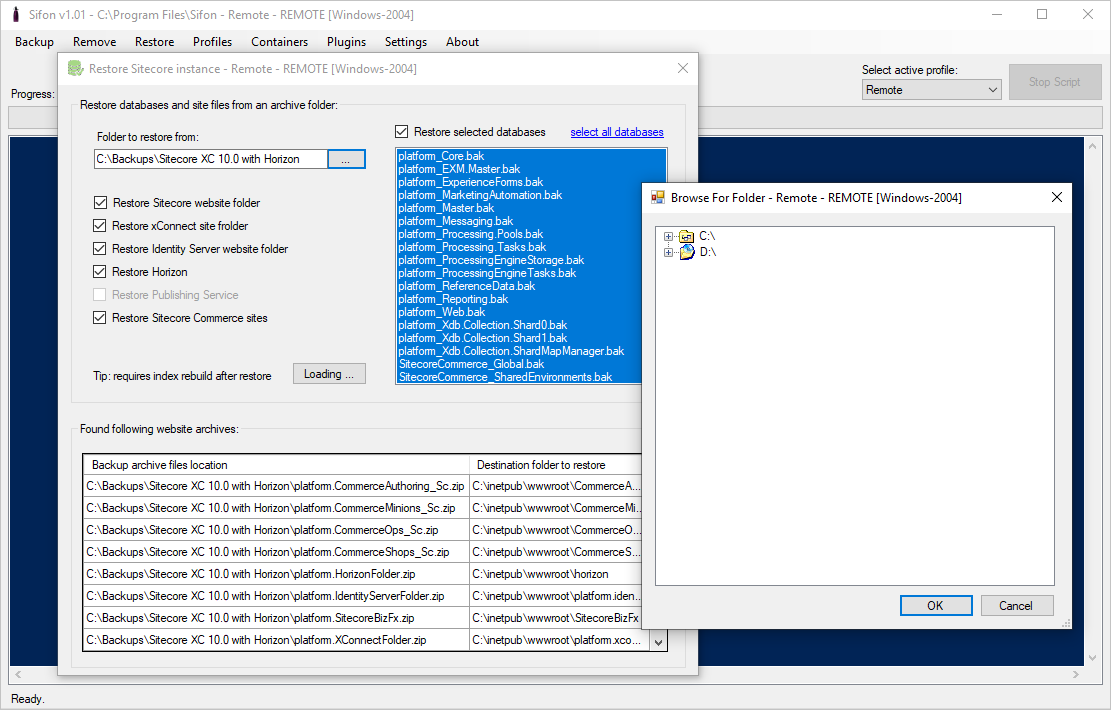Creating and restoring Sitecore instance backups
That is a default Sifon feature and is available out of the box. It obviously works for both local and remote profiles and does operations against one or many of the following:
Websites:
- main website, that has Sitecore installed
- XConnect website
Optional websites if installed:
- the website for Identity Server
- Publishing Service
- Horizon
Databases
- all the databases per instance that are prefixed with a value set as profile instance prefix.
Sitecore Commerce versions 9.x and 10.x
- all the Commerce websites
- two additional databases used by Sitecore XC
Performing each of them Sifon is intelligent enough to stop the related dependent services and start them again, when finished. There are 3 main operations as explained below.
Backup
At this stage you can select in instance from dropdown you'd like to backup. The dropdown values are auto detected based on the parameters from a selected profile. The dialog window header contains information you may find helpful: a profile name, its type, and a machine hostname for executing against remote profiles.
Once chosen, you'll be able to define which part of a selected instance you want to backup. That includes individual websites and databases. Those websites not installed for a particular instance will be greyed out. It is quite common to select everything to take a universal backup - it won't take longer at all.

Please note: the backups folder is located at the same instance where you take backups from. You may need to take additional care to copy these backup files into a safe location to avoid the losses when that machine fails.
Remove

Sometimes you just need to remove a Sitecore instance. You may already have taken backups of it and no longer need it up and running. This tool helps you doing that - removing it either entirely or partially.
This tool leaves IIS website records and HTTPS certificates untouched. When later one decides to restore a backup taken from that computer - it becomes easily possible to.
Restore
No backups make sense without restoring them.
This dialog allows selecting a folder with backup files and choose what exactly to be restored. Once a folder is selected, Sifon shows you the resources it finds and where those to be restored. You may select just a specific website folder backup or database to be restored, or as many of them as you want.
